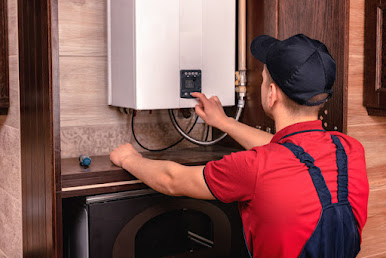How to Install a Boiler
The boiler can be an energy-efficient and eco-green solution when heating your house. Water is circulated through the boiler using heated pipes. It is distributed throughout your home in steam or hot water. It's an economical alternative. But the majority of homeowners don't have a boiler. They're using an inefficient heat source heating device instead. We want to assist you in making the necessary changes to this. If you want to set up a boiler, we suggest using a boiler installation in Epsom to take care of the task. This is how the installation procedure is done!
Step 1 – Location
The place of the brand-new boiler is as important as the type of boiler you select. The boiler should be close enough to water pipes, gas lines, an electrical outlet, and the flue to allow for ventilation, which we'll cover in detail later. The floor or the ground should be level, as well.
Step 2 - Dressing the Boiler
In this case, "dressing" means adding the proper pipework in the boiler system. To accomplish this, you'll need an adjustable wrench. Start by connecting this circular pump to the boiler unit, then connect the riser to the nipple. By doing this, you can connect the right pipes to ensure water flow throughout your home. Install the appropriate number of risers, then join each pipe to different zones within your home. You'll need the wrench previously mentioned!
Step 3 - Feed and Return Pipes
You can transfer to the return and feed pipes if you have the right pipes installed. Typically the circulator pump will be in the back of your boiler with the flow check onto the side feeding. The nuts will be tightened using the wrench, connect the boiler to the hot water tank, and use copper pipes and the correct fittings.
Step 4 - Flue Installation
We've talked about attaching a virus. Now, we're at the moment. The boiler has to be properly ventilated. This is done through the flue or smoke pipe. We suggest a sheet metal pipe that connects the boiler directly to the smoke pipe or the flue. You can drill a few holes in it and connect it using screws made of metal to ensure a tight fitting.
Step 5 - Attaching the Gas Line
Your new boiler can't function without the fuel source. If you're running a gas boiler, which is what most homeowners do, you'll need to attach it to the line for gas. You'll want to connect an uptight black pipe when running natural gas. The boiler manual will have specific instructions on properly fitting the gas line.
Step 6 - Start Her Up!
Once you have every connection established and properly placed, now is the time to begin the boiler. Now is the time to find out whether your efforts are paying back. The water line should be opened that allows the boiler to fill. There is no need to worry about pressuresince the feed valve is automatic and is covered. However, for what comes next, you'll need the services of a qualified plumber. A professional plumber will begin the boiler correctly and then verify the output of CO2, an essential safety aspect, and make the necessary adjustments. If you want to boiler installation in Greenwich then contact me.



.jpg)
Comments
Post a Comment